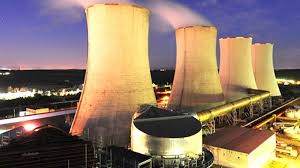Hwange emerges as Zimbabwe’s primary electricity generator
The Hwange Thermal Power Station has emerged as the primary electricity generator for Zimbabwe, meeting a significant portion of the national grid demands.
In the first quarter of this year, Hwange Power Station generated an impressive 1 696.4 gigawatt-hours (GWh) of electricity, accounting for a remarkable 75.4 percent of the total electricity generated during that period.
The output surpassed the generation from other major power sources, such as the Kariba Hydro-Power Station, which contributed 19.6 percent (440.5 GWh), and Independent Power Producers (IPPs), which provided the remaining 5.1 percent.
In August last year, President Emmerson Mnangagwa commissioned Units 7 and 8 at the Hwange Power Station built at a cost of US$1.5 billion, each adding 300 MW to the national grid.
The Index of Electricity Generation (IEG), an economic indicator that tracks changes in the volume of electricity generated over time, showed a quarter-on-quarter increase of 1.2 percent in the first quarter of 2024, reaching 89.2 percent, representing a substantial year-on-year increase of 53.2 percent compared to the same period in 2023.
To supplement its domestic generation, Zimbabwe also imported a total of 505.4 GWh of electricity during the first three months of 2024, a 33.3 percent increase from the previous quarter.
The majority of the imports came from South Africa (38 percent), Mozambique (34 percent), and Zambia (28 percent).
“While the total volume of electricity distributed between January and March 2024 decreased by 7.6% compared to the last quarter of 2023, the data reveals the importance of various sectors in electricity consumption.
“Manufacturing, transport, and construction sectors accounted for the highest usage at 616.5 GWh (30.4 percent), followed by mining and quarrying at 286 GWh (14.1 percent), domestic consumers at 500.1 GWh (23 percent), and other sectors at 474.5 GWh (24.7 percent). The agriculture and forestry sector consumed 159.6 GWh (7.9 percent),” Zimstat said.
These figures highlight the pivotal role of the Hwange Power Station in sustaining Zimbabwe’s electricity grid and the ongoing efforts to meet the country’s growing energy demands. – New Ziana











